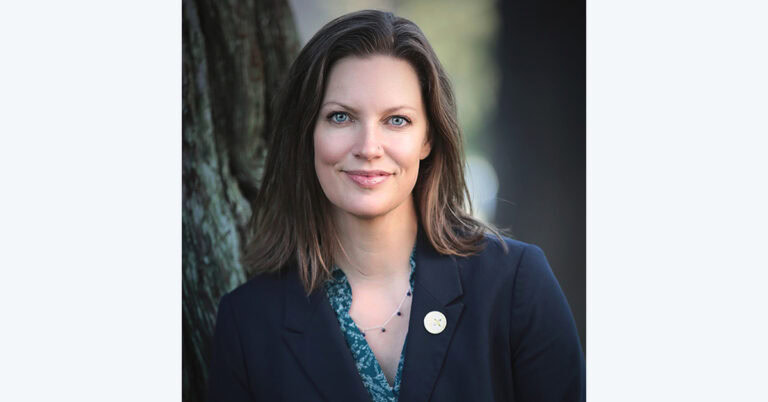Deputy Director
CCST Partner Institutions in Action Against COVID-19
April 21, 2021 | CCST Newsroom, Federal Research in California | Contact: John Thompson

Download the Full Report (PDF)
California Responds To The Pandemic
In late 2019, the novel coronavirus disease 2019 (COVID-19) quickly began to spread across the globe and by March 2020, the World Health Organization declared COVID-19 a pandemic. Since then, academic and research institutions across California and the world have leveraged their resources to respond to the crisis. The stories that follow represent just a few of the many ways that some of California’s preeminent educational and research institutions rapidly pivoted their resources, expertise, and research efforts to respond the ongoing COVID-19 pandemic. These highlights are by no means meant to be a comprehensive inventory of pandemic related response and research efforts, but rather, they offer a snapshot of the breadth of the ways that these organizations mobilized to respond to a complex and far-reaching disaster.
About CCST
The California Council on Science and Technology (CCST) is a nonpartisan, nonprofit organization established via Assembly Concurrent Resolution 162 in 1988. The resolution directed CCST “to respond to the Governor, the Legislature, and other entities on public policy issues related to science and technology.” To deliver independent advice to state policymakers, CCST engages science and technology (S&T) experts across California’s academic and research enterprise.
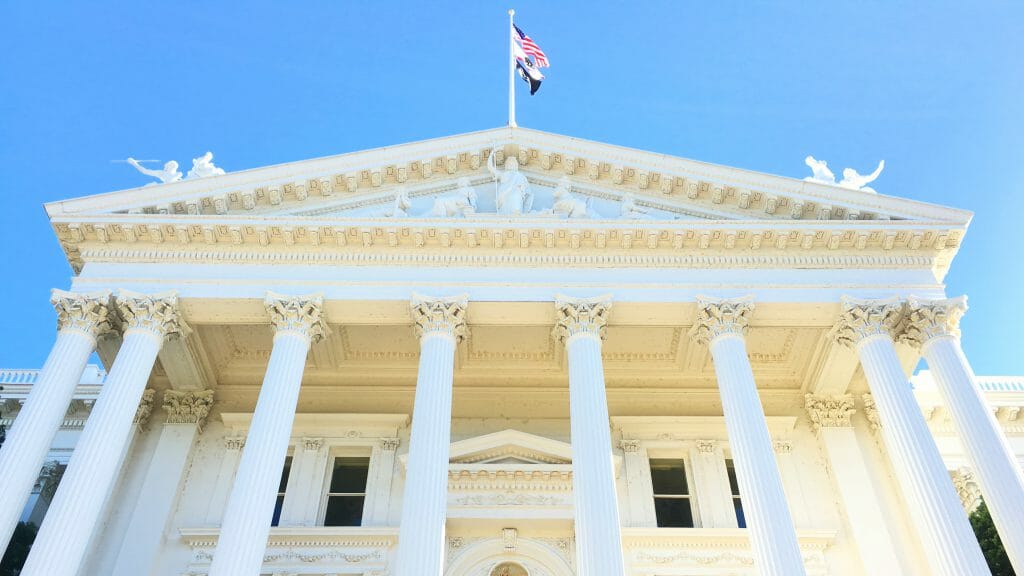
By connecting policymakers with leading scientists in California and beyond, CCST increases policymaker access to S&T advice that is informed by diverse expert perspectives. Over the past three decades, state leaders have requested CCST reports and expert briefings on many issues of policy importance, from natural gas storage safety to sustainable water futures.
CCST has formal relationships with eleven world class academic and research institutions across California, whose expertise we rely on to deliver S&T advice to the state. The connections we facilitate between policymakers and scientists also enhance the ability of our Partner Institutions to transmit S&T information for the public good, including by expanding opportunities for experts to participate in the policy arena and by identifying questions that will drive future research and innovation.
Our Partner Institutions
Academic Institutions
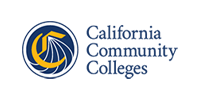

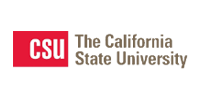
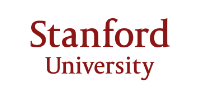

National Aeronautics and Space Administration (NASA) Field Centers
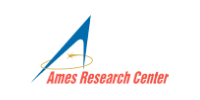

U.S. Department of Energy (DOE) National Laboratories
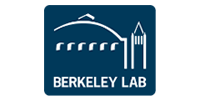
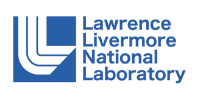

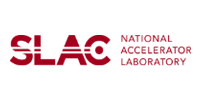
Disaster Resilience Initiative
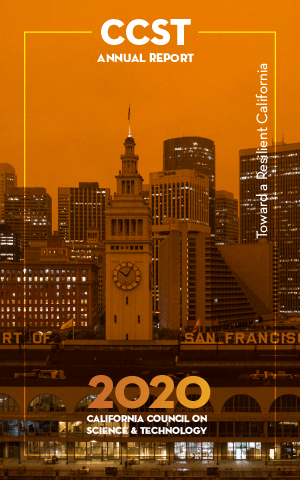
In 2020, in recognition of a need for more agile science and technology advisory frameworks for the State and the increasing threat of natural disasters in California, CCST launched its Disaster Resilience Initiative, focused on increasing the delivery and responsiveness of the science advisory support provided by CCST’s science and technology experts to California policymakers. This five-year public-private partnership will convene diverse, interdisciplinary experts from throughout CCST’s network to address the State’s most urgent disaster resilience advisory needs through a series of needs-finding workshops, briefings to policymakers, advisory meetings, and other engagements. An early focus of the Disaster Resilience Initiative is focused on the ongoing COVID-19 crisis and investing in a pandemic-resilient California.
Highlights from CCST Partner Institutions
The following represent just a few of the many ways that CCST’s partner institutions rapidly pivoted their resources, expertise, and research efforts to respond the ongoing COVID-19 pandemic. These highlights are by no means meant to be a comprehensive inventory of pandemic related response and research efforts, but rather, they offer a snapshot of the breadth of the ways that these organizations mobilized to respond to a complex and far-reaching disaster.
By category:
• Medicine, Virology, and Vaccines
• Public Health and Epidemiology
• Social and Behavioral Science
MEDICINE, VIROLOGY AND VACCINES
In the early days of the pandemic, many research institutions rapidly pivoted their efforts to address the major gaps in our knowledge of the coronavirus that causes COVID-19: How does it function? How does it spread? What are effective treatments for sick people? Individual researchers eager to contribute their expertise to the response to the rapidly evolving pandemic put previous work on hold to quickly spin up new projects and initiatives. These are just a few ways that our Partner Institutions mobilized to address these fundamental research questions.
Visualizing the Virus
SLAC National Accelerator Lab
Before researchers could tackle therapeutics and vaccines to fight the pandemic, they had to answer a basic question: what did the virus that causes COVID-19 even look like? Knowing the virus’s structure is a critical first step in understanding what vulnerabilities may be exploited by the cutting-edge work of SLAC researchers. To better understand the structure of the virus, Aina Cohen and the team at the Stanford Synchrotron Radiation Lightsource (SSRL) used x-rays and complex crystallography to map features of the virus, such as its spike proteins, the surface coating that anchors the virus to the lungs.
To see the virus, read more here
A Vaccine for Every Coronavirus
Lawrence Livermore National Laboratory
The novel coronavirus that causes COVID-19 is just one of many strains of a coronavirus, a specific subset of virus that includes things like the common cold; more severe strains like the severe acute respiratory syndrome (SARS) virus, which had an outbreak in 2003; or the Middle Eastern respiratory syndrome (MERS) virus which had a global outbreak in 2012. Nick Fischer and Amy Rasley, researchers at Lawrence Livermore National Lab, recognized that even after we overcome COVID-19, there will be other coronaviruses that threaten daily life. They have teamed up with the Government of the United Kingdom and biotech companies to help develop nanoparticles that could be used as the basis for combatting all coronaviruses, originating in the past, present and future.
To hear more about a universal nanoparticle-based vaccine, click here.
Understanding How COVID-19 Hijacks a Cell
California Institute of Technology
Viruses propagate illness by hijacking human cells as a host—using the machinery of a cell to produce more virus instead. Knowing how this process works in COVID-19 is critically important for understanding not only how the disease works (and how quickly it spreads) but also how to develop pharmaceutical interventions. At Caltech, Mitchell Guttman and his laboratory of researchers have done a deep dive into the fundamental biology of the virus causing COVID-19 and analyzed 30 different proteins that the virus uses to commandeer healthy cells, and the three different pathways that could be potential targets for developing targeted therapies.
Read about the mechanisms of COVID-19 here.
How Long Are You Sick?
University of California
It is still unclear how long some patients will be battling the effects of COVID-19–and some worry they will never fully recover. Christian Sandrock of UC Davis has helped launch a “Post-COVID Clinic” to better understand and cope with COVID-19 symptoms that just won’t go away. Dr. Sandrock reports that between 10-20% of COVID-19 patients present as “long haul” cases, with symptoms persisting and even developing new symptoms for several months after initial diagnosis.
Learn more about the Post-COVID Clinic at UC Davis here.
A Vaccine for Multiple Variants
California Institute of Technology
With recent reports of increasingly contagious COVID-19 variants, there are growing concerns we may struggle to keep up with the rapid evolution with our current vaccines. To combat this situation, Alex Cohen, a graduate researcher in the lab of Pamela Björkman, has developed a nanoparticle system that elicits an immune response using a coating made from multiple different kinds of coronaviruses. Not only do they hope that this technology can be used as a vaccine against various strains of COVID-19, but also that it will rapidly decrease the development time for a vaccine for any future novel coronavirus, in turn potentially diminishing the severity of future pandemics.
To learn more about vaccinating against COVID-19 variants, click here.
The 10-Year Plan
Lawrence Berkeley National Laboratory
As our understanding of the virus improves and more and more vaccines are distributed to the public, the light may be appearing at the end of the tunnel for the immediate impacts of the pandemic. However, we must still reflect and ask ourselves: how did we get here? Will we be ready for the next pandemic? To ask these difficult questions, Berkeley Lab has put forth a 10-year plan to address not only the immediate needs of society such as a better understanding of how the virus is transmitted, but also ambitious long-term goals like establishing mobile, automated laboratory facilities to increase our rapid response capabilities for whatever may be coming next.
To learn more about Berkeley Lab’s ambitious goals for the present and the future, read their 10-year strategic plan here.
High Performance Computing
Multi-Organization Collaboration
Powered by six hundred quadrillion operations per second of computing power (600 petaflops), the COVID-19 High Performance Computing Consortium represents 43 member institutions of Federal and State governments, industrial leaders, and a cadre of academic labs putting their combined resources together to solve some of the most complex equations the world has ever seen. While it is almost incomprehensible how powerful this network is, it allows researchers across the globe to submit unique research projects that would otherwise be impossible, such as in-depth modeling of how potential drugs might perfectly line up with the structure of a key virus protein, allowing us to make the most of our limited time when it comes to screening a number of potential drugs in the clinic; or modeling exactly how the disease spreads in aerosols under different conditions, potentially unlocking secrets for how to safely open our schools and businesses.
To learn more about the High Performance Computing Consortium, click here.
ENGINEERING
In addition to the groundbreaking basic science research highlighted above, our Partner Institutions have also leveraged their considerable expertise in the engineering fields to develop solutions for pandemic interventions. Whether it is addressing the shortcomings in the supplies of personal protective equipment or ventilators, or creating new devices to aid COVID-19 patients and healthcare workers, our Partner Institutions continue to do high impact work in the field of engineering. Here are some highlights.
Vital, The COVID-19 Ventilator
NASA Jet Propulsion Laboratory
Taking lessons from what they have learned from respirators used in space travel, NASA’S Jet Propulsion Laboratory partnered with other institutions like UCLA and Caltech to rapidly roll out an FDA approval-eligible ventilator design to respond to the unprecedented need for ventilators amid the COVID-19 crisis. Some of its unique features include longer shelf-life and resistance to dirt and dust, making it ideal for non-traditional hospital settings to provide care wherever it is needed most.

NASA JPL scientists give a thumbs up after testing their prototype ventilator at the Icahn School of Medicine (Mount Sinai, New York (Credit: Icahn School of Medicine at Mount Sinai, New York City and NASA/JPL-Caltech).
To learn more about NASA’s Vital Ventilator, visit their website here.
Decontaminating Reusable Masks
Sandia National Laboratories
Early in the pandemic, securing the supply chain of critical personal protective equipment (PPE) was no easy feat. Quickly, researchers at Sandia labs recognized that new technologies could be utilized to clean respiratory masks rapidly and effectively to stabilize California’s stockpile of PPE against the instabilities of the pandemic-battered global supply chain.
Read more about Sandia’s quick-response efforts here.
Cheap, Easy-to-Access Ventilators
SLAC National Accelerator Lab
Like their colleagues at NASA, researchers at SLAC recognized that access to ventilators was in heavy demand early in the pandemic. By re-imaging the ventilator design process and making a sophisticated version of the simplest design, SLAC researchers developed a ventilator that could be produced for under $400 and a royalty-free license to get critical, life-saving technology into as many hands as possible.
Learn more about SLAC’s commitment to ventilator access here.
Bolstering the Swab Supply Chain
Lawrence Livermore National Laboratory
Making sure the public had access to fast, effective testing and contact tracing was a top priority for flattening the curve and informing risk tolerance for policymakers. However, an unexpected bottleneck in the testing process was inconsistent or delayed access to swabs–many swabs manufacturers were based overseas in countries that were heavily impacted early in the pandemic, like Italy. LLNL engineer Angela Tooker and her team sprang into action by working with 3D printing technology to manufacture prototypes that could then be submitted for clinical trials approval. Tooker teamed up with Abiogenix to iterate on the FAST Spiral NP Swab and was found to be just one of four 3D printer designs that passed clinical trials (from over 150 designs tested).

A number of 3D printer designs tested and iterated upon by LLNL for securing the swab supply chain. (Credit: LLNL)
Read more about LLNL’s FDA-approved 3D printed swabs here.
Rapid, At-Home Testing
California Institute of Technology
Caltech researcher Wei Gao and his team have developed new sensor technologies that address some of the biggest challenges of COVID-19 testing. Their prototypes have shown the ability to sense COVID-19 while an individual is pre-symptomatic and has shown sensitivity in samples of blood, saliva, and even sweat. In addition, the sensors can be mounted on low-cost devices that communicate with your smartphone, allowing for near-immediate feedback without a trip to the testing clinic. While still in early-stage development and validation, Gao’s work is critical for risk management, as it allows people to stay at home and test regularly, avoiding the situation in which a pre-symptomatic person spreads the virus for days or weeks before they even think about getting tested.
Learn more about the cutting edge sensor design here.
Inspired by the Real World, Professor Improves Spirometers
California State University
An incentive spirometer sounds like a complex device, but is mechanically simple — it is a tool given to patients with decreased lung function to help them exercise their lungs by keeping a steady output of breath. Unfortunately, patient compliance around lung exercise tools is relatively low. Inspired by seeing his friend recovering from lung injury forget to use his incentive spirometer, Sonoma State University professor Farid Farahmand developed an improved incentive spirometer to give the patient immediate feedback while tracking compliance. With a surge in lung issues arising from the COVID-19 pandemic, the smart modification to an old exercise may help many return to a normal life post-COVID-19.

Sonoma State professor Farid Farahmand shows off his InSee spirometer to help COVID-19 patients recover lung function. (Credit: Sonoma State University)
Learn more about the InSee, the re-imagined incentive spirometer, here.
Safely Sterilizing N95 Masks with High Humidity
SLAC National Accelerator Lab
To combat N95 mask shortages, many hospital staff were left to reuse their limited supplies — increasing their own risk and also the risk of their patients. Sterilization offers an opportunity to safely reuse an N95 mask multiple times, decreasing risk while not straining the supply chain. However, many sterilization techniques—such as long UV light exposure or high heat treatments—may degrade the filtering capacity of the respirator, giving the user a false sense of security. Researchers at SLAC have developed a technique using high humidity and relatively mild heating conditions to sterilize an N95 mask without degradation that could be repeated up to 20 times on a single mask. In addition, this technique could be used beyond the COVID-19 pandemic and save hospitals and other healthcare settings on masks for other coronaviruses, such as the common cold.
To learn about SLAC’s N95 sterilization technology, click here.
A Pendant to Help You Stop Touching Your Face
NASA Jet Propulsion Laboratory
One of the common strategies communicated to the public to manage the spread of disease has been to minimize touching their face, especially when they have recently been touching common surfaces or haven’t been recently washed their hands. However, many people have had trouble remembering to avoid this common and often unconscious behavior. To help monitor and modify the behavior, researchers at JPL have published an open-source guide on how to 3D-print and assemble a wearable necklace that vibrates whenever a person moves to touch their face. The haptic feedback serves as a gentle reminder to make one aware of behaviors so people can hopefully train themselves to touch their faces less frequently.

NASA JPL’s wearable device. (Credit: NASA/JPL-Caltech)
To access JPL’s wearable device, click here.
PUBLIC HEALTH AND EPIDEMIOLOGY
The foundation of a pandemic resilient state is a strong public health system, from tracking the spread of a disease to designing behavioral interventions to reduce its spread. While the state and county public health offices are the frontline when it comes to this important piece of pandemic response, our Partner Institutions have supplemented these efforts by expanding our knowledge of different public health aspects of the pandemic. Here is some of the work conducted in this area.
Modeling COVID-19 Infection Spread
Stanford University
A team of Stanford scientists led by Jure Leskovec developed a computer model that accurately predicted the spread of COVID-19 in several major cities last spring. Combining demographic, epidemiological, and anonymized cellphone data, the model considered three major factors in predicting infection events, where people go during a day, how long they linger there, and how many other people are present at the same time. The study confirmed that most infections were likely to occur at “superspreader” sites, where many people were in close indoor quarters for long periods of time, such as full service restaurants and gyms. By making the model publicly available, the team hopes that it can be used by policymakers to better inform decisions surrounding stay-at-home and reopening policies.
Read more about the model here.
Why Do You Lose Your Sense of Smell with COVID-19?
University of California
After hearing peculiar reports that COVID-19 patients were losing their senses of taste and smell, UC Merced PhD student Vicente Ramirez and professor Stephen Wooding set out to try to understand why people without nasal congestion couldn’t smell anymore. What they discovered highlights the complexity of senses and the human brain’s interpretation of sensory input—how can we describe something we cannot test? How do we know if something is a loss of smell, or a loss of taste? Their work now follows over 100 studies to try to identify patterns to help the medical community understand this unique, puzzling symptom.
Read more from the University of California here.
New Results in Old Data?
Lawrence Berkeley National Laboratory
One of the biggest challenges for researchers is simply that COVID-19 is a new virus, and there isn’t ample time to deeply understand its complexities. However, there do exist decades of pharmaceutical research that look at outbreaks similar to COVID-19. Berkeley Lab researcher Chris Mungall and his team set out to develop a “knowledge graph,” a huge, working database of publicly available information including cutting-edge COVID-19 research as well as historical data on other viruses. Easy access to this information allows researchers to utilize complex algorithms to sift through mountains of data to find unique patterns or connections that identify drugs that have been proven to be safe for the treatment of other diseases, using historical knowledge to ultimately help combat COVID-19 much more quickly than designing a new drug from the ground up.
Read more about Berkeley Lab’s knowledge graph here.
COVID-19 Spreads Faster in Prisons than on Cruise Ships
Stanford University
California State policymakers face incredible challenges during the pandemic about how to responsibly manage the State’s incarcerated population when the environment limits the ability to social distance. Stanford researchers Margaret Brandeau and Giovanni Malloy set out to quantify the risk of viral spread in our prisons using real-world data combined with simulations. They found that prisons were perhaps one of the highest-risk environments for virus transmission, topping even cruise ships—highlighting the importance of getting public policy decisions surrounding prison population management right in the time of a pandemic.
Read more about their work here.
Identifying Systemic Racism and COVID-19
California State University
It is indisputable that systemic racism has resulted in some communities being impacted by the pandemic more or less strongly than others. For example, researchers have already found that in Los Angeles County, people of Hawaiian or Pacific Island descent have an infection rate five times higher than their population rate. Or Black patients are more likely to die from COVID-19 due to the increased rate of underlying health disparities (such as asthma) from decades of income and social inequality. In 2019, CSUN created the Health Equity and Research Education (HERE) Center to counter these problems.
To learn more about the HERE Center and the effect of systemic racism and social determinants of health, click here.
STUDENTS & EDUCATION
Many of our Partner Institutions, in addition to conducting cutting edge research, are world class educational institutions. As the pandemic forced schools to shift to a virtual teaching setting, educators and administrators were challenged to reimagine what the classroom and college campus looks like in this environment. Here are some of the ways our partners have brought innovation to the classroom.
Teaching Complex Crystals over Zoom
California Institute of Technology
The COVID-19 pandemic has underscored the importance of highly trained scientists like those taught new skills in professor Brent Fultz’s Material Science 132 class on crystal structure—one of the most critical skills for identifying how the COVID-19 virus functions. Dr. Fultz and his students have had to adjust rapidly to the modern era of distance education, pulling out all the stops such as group messaging over apps like Discord to simulate pre-class, informal chatter with the professor and his teaching assistants, and pre-planned breaks in lecture to allow for questions to arise organically.
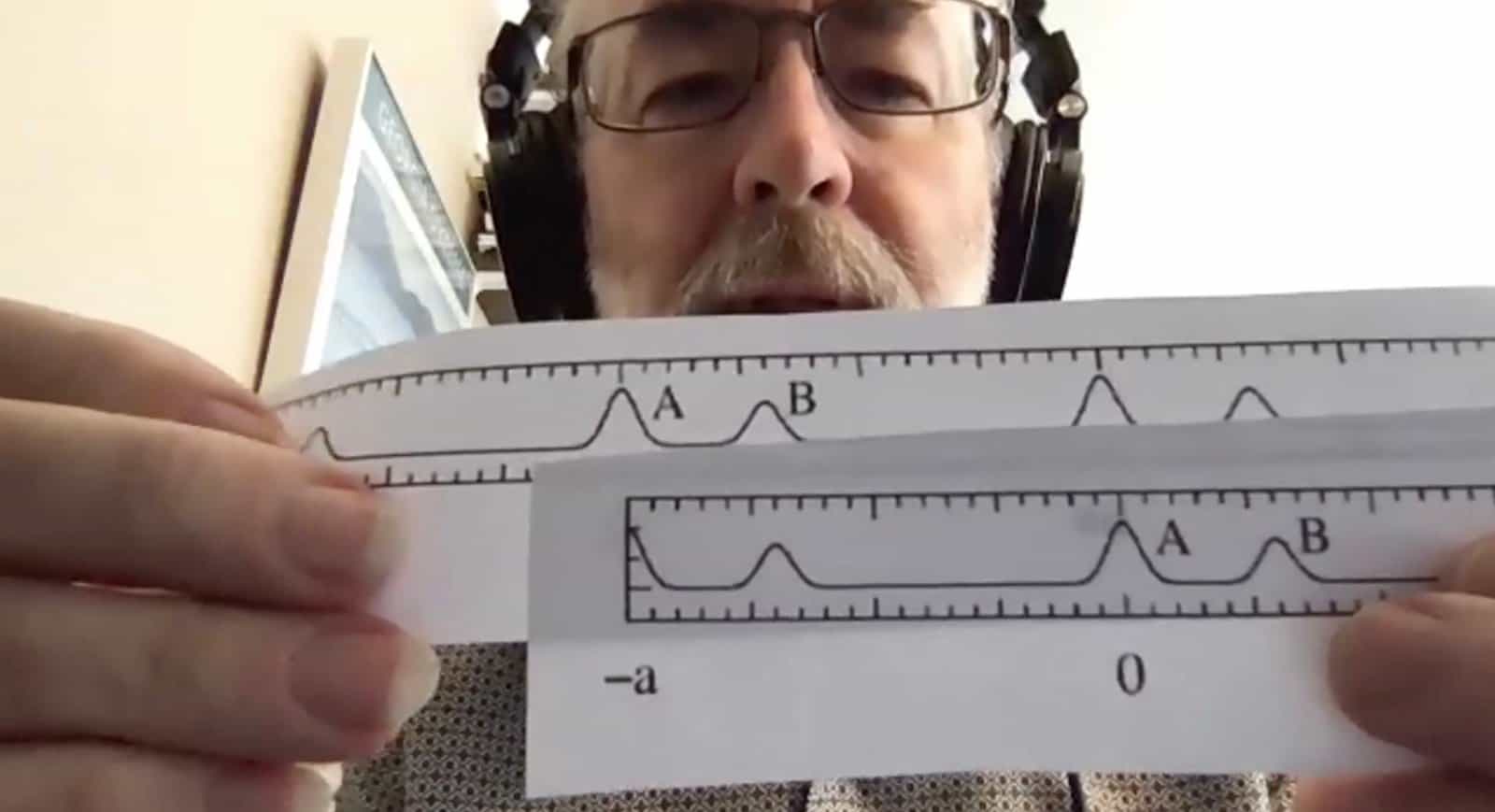
Professor Brent Fultz showing the next generation of scientists how to describe the placement of atoms in a crystal (Credit: Caltech)
A deeper discussion of his process can be found here.
Turning on a Dime
California Community Colleges
As the pandemic spread across California and the nation, community colleges were quick to shut down campus operations and shift to online instruction. With only 41% of students having taken at least one digital course prior to 2020, community college leadership was particularly concerned with ensuring their students had the support and resources to access their remote coursework. Surveys of student bodies revealed that on some campuses, up to 20% of respondents did not have access to reliable internet access to take classes. Campuses were quick to distribute devices, from laptops and chromebooks to webcams and headsets, to help students remain connected to their coursework. Individual campuses pursued creative solutions to ensure internet access for their students and faculty, such as Cabrillo College, which made special arrangements to create WiFi- hotspots in campus parking lots, or Santa Monica College, whi worked with internet service providers to offer temporarily free internet to students.
To learn more about CCC’s approach to adapting their operations, read this briefing prepared by the UC Davis Wheelhouse Center for Community College Leadership and Research, here.
Re-imagining Freshman Mentorship
California Institute of Technology
Initial impressions can be critical for the success of an incoming freshman, especially when they are a first-generation college student or come from an underrepresented community. Rising to the challenge of how to handle the transition during a virtual freshman year, the Caltech Center for Inclusion and Diversity (CCID) expanded the scope and capacity of their bootcamp program to make sure their students were set up for success. Leveraging the fact they were now fully remote, the program could even make mentorship connections with researchers that they previously couldn’t, such as pairing a freshman student with a mentor at NASA’s Jet Propulsion Laboratory; services like this would have been logistically very difficult in past years, given transportation and security constraints. Despite the distance, CCID still was able to support their freshmen class with activities like at-home DNA extractions and talent shows to bolster not only their academic skills but also their sense of community.
To learn more about CCID and their remote onboarding, click here.
ENVIRONMENT & AIR QUALITY
Beyond the catastrophic loss of human life and immediate economic impacts, researchers are still in the process of trying to understand the higher order effects of the pandemic. On such example is how the pandemic has affected and interacted with the environment. The pandemic and widespread stay-at-home orders have radically altered everyday life, while at the same time providing researchers with an opportunity to examine the ways that human behavior interacts with the environment in an unprecedented way.
Seeing the Virus — from Space
NASA Ames Research Center
We will be quantifying the impact of COVID-19 on our societies for decades to come, but NASA satellites have already begun to detect some of the surprising ways in which our cities are changing during lockdown conditions. For example, the city of San Francisco is measuring nearly 15°F cooler than normal because of the lack of cars on the road, and emission of pollutants like nitrogen dioxide are down across the board.
Take a look at the interactive maps of satellite images here.
Understanding the Broader Impacts of COVID
NASA Jet Propulsion Laboratory
The COVID pandemic resulted in immediate, radical changes to every facet of life. At JPL, researchers began to look at how secondary and tertiary effects of the pandemic could bring about other unforeseen catastrophes: food and water insecurity. Investigating effects such as travel restrictions on workforce availability, or the lack of accurate surveying to model proper water usage, scientists build new tools and datasets for policymakers to best respond to ever-evolving, complex situations.
Learn more about NASA’s monitoring of COVID-19 here.
Unprecedented Real-Life Research Conditions
NASA Ames Research Center
With some form of shelter-in-place policy happening across the majority of the globe, there have been unprecedented changes in human behavior over the last year. Researchers at NASA have identified that we can use these moments to test hypotheses about the environment using real-world data. For example, it has been historically difficult to estimate the effect of man-made clouds (“contrails”) on warming—but with travel restrictions and a dramatic decrease in the number of planes generating contrails, NASA researchers now have the ideal control conditions to quantify contrails’ contribution.
For an overview of the contrails project and other once-in-a-lifetime environmental experiments, click here.
COMMUNITY ORGANIZATION
In our conversations with Partner Institutions, researchers repeatedly stressed the importance of engaging with and serving local communities and stakeholders. The discoveries and technologies developed in the lab are nothing if they cannot be deployed to and adopted by the communities where the need is most acute. There are a few of the ways our partners have leveraged their resources to directly help their local communities.
Nursing Students Chip In to Help Vaccinate California
California Community Colleges
The State of California has set ambitious goals for daily vaccinations—so much so that many communities were initially struggling to staff vaccination sites to keep the operation running smoothly. California’s community colleges responded to California’s needs by mobilizing their licensed vocational nurses and nursing students to help wherever possible. While students cannot administer the shot directly, they can pitch in with support for important visit features, like educating patients to monitor for side effects, helping complete intake assessments, and more.
Learn about how our students are chipping in Moreno Valley and Madera County.
Bridging the Achievement Gap
California State University
Quarantining presents numerous challenges for many people throughout communities—but students at CSU DH have come together to keep their communities intact. The Center for Innovation in STEM Education (CISE), a program in partnership with Apple, has sprung into action with several short- and long-term projects to get help where it is most needed. Among their numerous community outreach projects are: supplemental remote tutoring lessons for students struggling to adjust to the Zoom era of education, and combating social isolation by engaging with K-12 students to write to isolated seniors in their communities.
Learn more about how to help engage with your community here.
Maker Spaces Provide Masks, Shields to Local Hospitals
California Community Colleges
Maker spaces across California have been converted into mini-factories for producing the desperately needed personal protective equipment for essential workers at the peak of their need. Especially in the early months of the pandemic response, frontline healthcare workers may not have known whether there would be a clean mask or face shield available for their next shift. Seeing this need, California’s robust network of community colleges stepped up to the challenge and contributed in a big way, using technologies like 3D printers to manufacture complex structures like face shields both rapidly and locally. Maker spaces have been key places in the strategy to break down barriers to accessing technology and enabling scientific exploration, and now are showing the real-life impacts that these investments can have.

San Bernardino Community College staff Juan Zavala (left) and Roxane Joyce (right) show off medical-grade face shields created using their 3D printer technology. (Credit: San Bernardino Community College District)
To learn more about the Maker Space movement, check out CCST’s resources and publications here.
THE ECONOMY AND EMPLOYMENT
The economic impacts of the pandemic have been widespread and devastating. From large-scale unemployment to the closure of countless small businesses, the full extent of the damage is still being assessed. Even businesses that were fortunate enough to remain operational had to adapt to a largely virtual world, with the home and the workplace becoming one and the same for many employees. Here are some highlights of the efforts of our Partner Institutions in regard to the economy and employment.
Surveying Local Economies
California State University
The global pandemic has also very much been a local affair, with different cities, towns and communities all experiencing the many facets of the crisis in different ways. CSU DH set out to analyze how their own local communities in South Bay were responding, and have released an in-depth economic forecast, looking at shifts in local manufacturing, what sectors were hardest hit, the effects of working from home on the future of work, and what opportunities for growth have emerged.
For more information on how local economies have adapted and evolved during the pandemic, visit here.
Accelerating Tech-Transfer to Bolster the Economy
Sandia National Laboratories
Within days of the shutdown in March, Sandia National Laboratories recognized the importance of stabilizing the local and national economies. In response, they rapidly identified over 1000 of their own technologies that could be immediately licensed for free for commercial usage. In doing so, Sandia and their Rapid Technology Deployment Program toppled traditional barriers to tech transfer agreements—money and time. As of this writing, the licenses have been extended to July 2021 for full, free commercial operation.
Read more about the RTDP program here.
Training Tomorrow’s Workforce
California Community Colleges
The Inland Empire/Desert Regional Consortium, a network of twelve community colleges in Riverside and San Bernardino counties, is helping to train the workforce of the future amidst a new, distanced normal. Its Local Apprenticeships Uniting a Network of Colleges and High Schools (LAUNCH) Program connects local schools, workforce development boards, and businesses to facilitate the development of apprenticeship training programs. Since the start of the pandemic, LAUNCH has shifted its classes to a virtual environment; developed streamlined processes for engaging industry partners; and has begun to develop or launch new apprenticeship programs in Automotive, Healthcare, and IT.
Read more about the LAUNCH program here.
Is Telework The ‘New Normal’?
California State University
Early in the response to the pandemic, the way we worked changed rapidly. But some are wondering: could that meeting always have just been an email? As we have gotten better and more comfortable with the technology required to work from home, Fynnwin Prager (co-director of South Bay Economics Institute at CSU Dominguez Hill) wonders just how fundamentally the economy has been altered by the pandemic. Many of these trends, such as an increase in online shopping, were happening before the pandemic but have been rapidly amplified.
To learn more about how CSU DH is helping shape the post-pandemic economy, click here.
SOCIAL AND BEHAVIORAL SCIENCE
Across all of our conversations with Partner Institutions, researchers continuously stressed the importance of incorporating social and behavioral science into pandemic response. With individual behaviors playing such an important role in the success of public health interventions such as mask wearing or social distancing, insights into the ways individuals perceive risk, respond to public guidance, and alter their own behaviors based on external factors could lead to better strategies for communication around the pandemic. This is how some of our partners have approached the pandemic from a behavioral science perspective.
Modeling Human Behavior and Disease Spread
Stanford University
Beyond understanding how the virus operates and how to treat it, Stanford researcher Noah Rosenberg and his team are concerned about the human element of disease spread. For example, how do anti-vaccine sentiments affect the course of a contagious disease? While their research was initially informed by measles (against which the majority of the population is already vaccinated), the COVID-19 connection is clear, as California braces itself to try to grapple with disinformation and anti-vaccine sentiment on a heavily-publicized platform.
Learn more about the math behind disease spread here.
Probing Emotional and Social Attitudes
California Institute of Technology
Caltech researchers have launched a 1000-person, longitudinal study to track the evolution of mood and behavior during one of the most unusual social dynamics of our time—the pandemic. By tracking how people feel, researchers hope to gain insight into how the aspects of the public, such as emotional biases towards other groups or personal decision making, change over time in response to external forces and how long those changes last. Similarly, the program hopes to allow policymakers to craft more targeted and effective public health measures to combat biases and address underlying emotional causes around poor adherence to mask wearing and social distancing.
To learn more about the COVID-Dynamic Longitudinal Study, visit here.
Spreading the Word on Mask Usage
Stanford University
Messaging around public health measures like social distancing and mask wearing has been one of the biggest challenges and ultimately biggest failures in the United States in the pandemic. Early messaging from officials was often confusing or even contradictory and had lasting implications for public trust and adherence to public health guidelines, particularly as they got stricter as the pandemic worsened. Francisca Santana, a PhD student at Stanford, has recently published a thorough investigation into the nuance around public health messaging using perspectives learned from California’s recent wildfires and how those lessons could have improved COVID-19 health messaging. For example, Santana found that one of the most powerful ways to increase mask wearing behavior was to have people gift masks to those in their social circles — not only does it simply improve access to masks, but it also gives the mask a positive social association of meeting the expectations of your peers.
Read more about the social science of mask-wearing here.
Emerging from Collective Trauma
University of California
Roxane Cohen Silver, of UC Irvine, has studied the effects of collective trauma on the social fabric and human resilience in response to events ranging from earthquakes to the terrorist attacks on 9/11. Her work suggests that post-pandemic success will be strongly correlated with not only the circumstances during the pandemic, but also an individual’s pre-pandemic situation. For example, a person’s access to health insurance during the pandemic will be a key indicator of their stress levels during the pandemic, but will also have been an indicator of stress and financial uncertainty pre-pandemic. Similarly, many people may not have had access to traditional coping mechanisms during quarantine, such as the ability to gather with family and friends to collectively mourn the loss of a loved one at a funeral.
To learn more about Dr. Silver’s roadmap for post-pandemic behavioral science, read her article in Science magazine here.
PUBLIC POLICY
In addition to being world class research and educational institutions, our partners remain committed to translating the work of their researchers into policies that will have a positive impact on millions of people. There are just a couple of the ways that our Partner Institutions have leveraged their expertise to directly inform the development of policies related to the pandemic.
Three UCSF Faculty Named to Biden-Harris COVID-19 Advisory Panel
University of California
Faced with an unprecedented, historic pandemic in the middle of a presidential transition, President Biden and Vice President Harris turned to top of the line medical expertise, tapping three UC San Francisco faculty to join their COVID-19 advisory panel. Dr. David Kessler (co-chair), Dr. Eric Goosby, and Dr. Robert Rodriguez joined a team of 10 other experts across the country to help steer and advise the incoming administration. The team is tasked with interfacing with local and state public health officials, enabling a safe economic recovery, re-opening schools, and tackling the racial disparities laid bare during the pandemic.
To learn more about the California perspective brought to the Biden-Harris administration’s COVID-19 efforts, click here.
COVID International Research Team
Multi-Organizational Collaboration
A global problem like COVID-19 requires a global solution. Our Partner Institutions sprung into action quickly, helping to assemble a massive, worldwide consortium of cutting-edge researchers spanning all aspects of the pandemic response: medical experts, government agencies, virologists, data scientists, geneticists, computational scientists, engineers and more. With California and the United States leading the charge, the team spans 11 countries with over 190 individual contributors. With the unique collaborative structure, the team has managed to pull together previously unobtainable public datasets, identified drug targets, and developed some of the most sophisticated tools for pandemic response—both public facing and internal.
For more about the COVID International Research team, visit their website here.
CCST can assist California Legislative and Executive offices in connecting with scientific experts and research resources in the State of California.
For assistance, please contact:
John Thompson, PhD
Senior Science Officer
[email protected]
(916) 492-0996
Find us online at www.ccst.us
Special thanks to Geoff Hollett, PhD for his contributions preparing this report.


